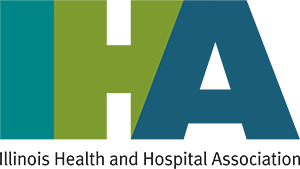OSHA Issues Rule on COVID-19 Healthcare Workplace Safety
June 11, 2021
Memorandum
On Thursday, the Occupational Safety and Health Administration (OSHA) issued a final emergency rule requiring healthcare employers to protect workers against on-the-job COVID-19 infection. The emergency temporary standard (ETS) applies only to the healthcare sector.
In one of his first executive orders upon taking office in January, President Joe Biden ordered the Department of Labor (DOL) to consider issuing an emergency temporary standard for businesses to follow during the pandemic and, if the department deemed it necessary, to issue an ETS by March 15. After numerous delays, DOL ultimately submitted the proposed ETS to the White House's Office of Management and Budget for final approval in late April.
OSHA says the ETS is aimed at protecting workers facing the highest COVID-19 hazards—those working in healthcare settings where suspected or confirmed COVID-19 patients are treated. This includes employees in hospitals, nursing homes, and assisted living facilities; emergency responders; home healthcare workers; and employees in ambulatory care facilities where suspected or confirmed COVID-19 patients are treated.
The new rule will require non-exempt facilities to conduct a hazard assessment and have a written plan to mitigate virus spread, and require healthcare employers to provide some employees with N95 respirators or other personal protective equipment. In addition, covered employers must ensure 6 feet of distance between workers. In situations where this is not possible, employers should erect barriers between employees where feasible.
The rules also require covered employees to provide workers with paid time off to get vaccinated and to recover from any side effects. Covered employees who have coronavirus or who may be contagious must work remotely or otherwise be separated from other workers if possible, or be given paid time off up to $1400 per week. For most businesses with fewer than 500 employees, tax credits in the American Rescue Plan may be reimbursed through these provisions.
The ETS exempts fully vaccinated workers from masking, distancing and barrier requirements when in well-defined areas where there is no reasonable expectation that any person will be present with suspected or confirmed coronavirus.
Other provisions include:
- Patient screening and management;
- Cleaning and disinfection;
- Ventilation;
- Training;
- Anti-retaliation;
- Record keeping; and
- Reporting work-related COVID-19 fatalities and in-patient hospitalizations to OSHA.
The ETS is effective immediately upon publication in the Federal Register. Employers must comply with most provisions within 14 days and with the remaining provisions involving physical barriers, ventilation and training within 30 days. OSHA will use its enforcement discretion to avoid citing employers who miss a compliance deadline but are making a good faith effort to comply with the ETS. OSHA will continue to monitor trends in coronavirus transmission.
In addition to the healthcare-focused ETS, OSHA is issuing updated guidance to help employers and workers in other industries protect workers who are still not vaccinated, with a special emphasis on other industries noted for prolonged close-contacts like meat processing, manufacturing, seafood, and grocery and high-volume retail.
For more information, go to OSHA’s COVID-19 Healthcare ETS webpage, which includes several documents about the rule and implementation.

